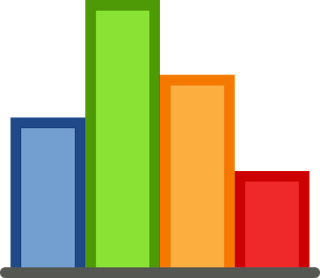Three Essential Information from an IT Management Dashboard
 Due to fast growing information and emergent digital technologies, IT becomes more significant in driving organizational changes and catalyzing business transformation. How to build an effective dashboard and setting the right performance indicators to measure IT performance can be the right step to improve IT effectiveness, efficiency, and overall organizational maturity. Here are three essential information you should get from an IT management dashboard.
Due to fast growing information and emergent digital technologies, IT becomes more significant in driving organizational changes and catalyzing business transformation. How to build an effective dashboard and setting the right performance indicators to measure IT performance can be the right step to improve IT effectiveness, efficiency, and overall organizational maturity. Here are three essential information you should get from an IT management dashboard.
Observed business goals/benefits/outcomes: It is crucial that the KPIs selected have to be adapted to the specific objectives that you want to achieve.Without properly aligning the objectives with the indicators, monitoring KPIs will not add much value. It is critical to identify the objectives before one embarks on quantifying the performance. Otherwise, a misguided KPI becomes a distraction. If you start from understanding your objectives and then identify the KPIs that will provide an indicator as to whether you are progressing towards achieving that objective, you are more likely to succeed. Wrong KPIs or incorrect methodology to collect data for relevant KPI's spells doom for business if not corrected quickly. At the operational level, the requirement of KPI, when not well understood, results in friction. So, there’re always two sides of measurement. The measures to motivate teams to achieve more and the measures to distract management from the ultimate business goals. The rule of thumb is that whatever metric/KPI you emphasize is exactly the one your team will focus on. Celebrating success is important, but understanding what’s blocking achievements, targets and performance is paramount.
Cost optimization aspects: Every new technology adopted must facilitate the business but also bring down the incremental cost of growth and the time to market. That should be the true metric for the IT leaders. IT cost optimization is on the top priority list of the CIO's agenda across the vertical sectors. Thus, the CIO's dashboard can highlight some significant IT cost and finance information (budget, expenses, service costs, etc), and keep track of the overall IT financial health. IT value is often measured by optimization and consumption of IT assets in support of the business solutions that are identified within the organization's revenue producing stream. Cost Optimization Metrics should reflect how they have been able to impact the top and bottom-line and facilitate growth and competitiveness. The IT cost can be categories into: IT operational cost, financials, technical debt, or a calculation of the cost to fix structural quality problems. IT vendor cost includes monthly expenses, license cost, procurement cost. People cost, salary grades, training investments, headcount & other relevant information about the IT team.
 Any decision about changing or transforming the business aspect: At the higher maturity level, IT has to go beyond just keeping the lights on. The strategic values are realized through IT initiatives or project portfolio, the business benefit and profitability from IT innovation and optimization. . KPIs drive behavior, very often organizations fail to define the outcome of the KPIs. Therefore, remaking decisions constantly based on KPI result is also very challenging. So, a well-designed IT dashboard could become the efficient tool to help IT management make effective decisions about change or business transformation. More specifically, it helps improving changeability - the effort necessary to modify the project, affecting time to market; and lift transformability – the effort necessary to map project benefit/cost, progress status to business transformation initiatives.
Any decision about changing or transforming the business aspect: At the higher maturity level, IT has to go beyond just keeping the lights on. The strategic values are realized through IT initiatives or project portfolio, the business benefit and profitability from IT innovation and optimization. . KPIs drive behavior, very often organizations fail to define the outcome of the KPIs. Therefore, remaking decisions constantly based on KPI result is also very challenging. So, a well-designed IT dashboard could become the efficient tool to help IT management make effective decisions about change or business transformation. More specifically, it helps improving changeability - the effort necessary to modify the project, affecting time to market; and lift transformability – the effort necessary to map project benefit/cost, progress status to business transformation initiatives.
An effective CIO's dashboard should be brief enough to keep the focus on the most strategic business initiatives and the most fundamental IT functionality. It should present relevant KPIs and metric information to make decisions and act on them. It should also have an intuitive graphical display that is well laid-out, intuitive, and easy to navigate; and to display the information that can be customized and categorized to meet the CIO’s specific needs. It is information-rich and simple to use for helping IT leaders to manage a high-performing IT organization effortlessly.
Follow us at: @Pearl_Zhu
Published on March 05, 2017 22:35
No comments have been added yet.



